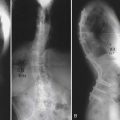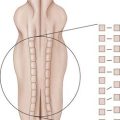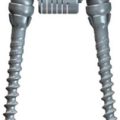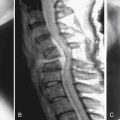69 Laser and Ozone Spinal Decompression
Introduction
Low back pain is one of the most frequent chief complaints in medical practices. Approximately 80% of the populations of Western countries will suffer from at least one episode of low back pain in their life. Pain is often characterized as either radicular or postural. While radicular pain is often due to an offending disc herniation, the etiology of low back pain is poorly understood. Proposed pathogenesis includes both mechanical and inflammatory mechanisms, including deformation of the annulus, stimulation of the nociceptive components of the spinal root, ischemia, venous stasis, prostaglandins, and cell-mediated immune response.1 Various surgical procedures have been utilized to address the treatment of low back pain. These include both motion-sparing and fusion interventions. While these procedures have excellent short-term effects, they have been linked to longer-term complications including recurrent disc herniation, postoperative scarring, and adjacent motion segment disease. As a result, less invasive procedures have been developed. Two such procedures, laser spinal decompression and ozone chemodiscolysis, have shown significant promise.
Laser Decompression
Peter Choy and David Asher were the first to use laser energy to evaporate disc material in 1986. Their initial results were poor, but subsequent studies have had good to excellent outcomes in upto 80% of patients.2 While various different lasers have been described, most of them use approximately 1200 joules per disc in a pulsatile manner. The principles of treatment are based on the hypothesis that the intervertebral disc functions as a closed hydraulic system. Thus, an increase in water content within the disc increases the pressure, as a result of the inelastic annulus fibrosus. The energy from the laser seeks to evaporate intradiscal material to decrease intradiscal pressure. Furthermore, the energy is hypothesized to denature and renature proteins, causing irreversible changes to the structure of the disc and its ability to rehydrate.3
As a result of the laser’s energy, the biomechanical properties of the disc are also affected. Experiments have shown that there is a negative correlation between laser energy and disc stiffness. While there is a decrease in intradiscal pressure, there is an overall increase in disc circumference and height as a result of the decrease in disc stiffness. The duration of these biomechanical changes has also been shown to be a function of laser energy. High-energy lasers have been shown to maintain disc height reductions on radiographs and MRI at 12 weeks of follow-up in animal studies.3
There is significant debate as to the type of laser most suitable for percutaneous laser decompression. Optical analysis of the properties of degenerative discs and the lasers used in clinical practice has revealed that the wavelength of the Ho:YAG laser provides the highest absorption rate (83% at 2060 nm wavelength). CO2 lasers have also been found to be the most effective at ablating disc material in vitro.3 No matter what type of laser is chosen, a temperature of 100° C must be attained within the nucleus pulposus for the treatment to be affective. It is important that this heat be confined to the nucleus so as to avoid the potential for destruction of the vertebral endplates, possibly causing a sterile spondylodiscitis, which has been reported in animal models. Clinical complications that have been reported include discitis, vertebral osteomyelitis, worsening of low back pain, and failure of the percutaneous probe requiring surgical decompression. Overall, the complication rate is believed to be around 0.5%.2
While there is significant debate with regard to the optimum amount of energy that should be delivered to ablate the nucleus pulposus to reduce intradiscal pressure, indications for the procedure are confined to contained disc herniations. Patients with extruded disc herniations, sequestered herniations, narrowed intervertebral spaces, vertebral abnormalities, or those patients experiencing severe neurologic symptoms should be excluded from receiving treatment.4 Although there is a lack of randomized controlled trials regarding percutaneous laser disc decompression, observational studies have shown positive evidence in support of the technique. These studies have shown an average relief of 72% at 1 year, with sample sizes of at least 50 patients. A systematic review of the literature revealed Level II-2 evidence for short- and long-term relief with a Grade 1C strong recommendation.4
Ozone Chemodiscolysis
The concept of chemodiscolysis or chemonucleolysis first gained popularity with chymopapain approximately 40 years ago. However, it fell out of favor as a result of reports of serious neurologic complications in addition to reports of anaphylaxis. Recently, there has been resurgence in the popularity of chemodiscolysis using an oxygen-ozone mixture delivered percutaneously. This technique is based on the principle that pain is generated by mechanical pressure as well as by radicular and periganglionic inflammation.1 Herniated discs are believed to cause pain through an autoimmune reaction as well as through the triggering of cytokine release. An oxygen-ozone mixture is believed to achieve its effect not only through chemodiscolysis, but also through an antiinflammatory effect similar to a corticosteroid. Postulated mechanisms of action of O2-O3 gas include improved oxygenation to reduce tissue hypoxia, inhibition of proteases, release of immunosuppressive cytokines, and disc dehydration through rupture of water molecules.
The approach is similar to other percutaneous disc techniques. Using CT guidance, a needle is inserted via a paravertebral approach into the center of the disc. A mixture of oxygen and ozone gas is injected into the disc and the foraminal spaces. In a recent study of 2900 patients who were treated with this method, good results with regard to the VAS score were achieved in 85% of patients, with no neurologic or infectious complications reported.5 Furthermore, a recent randomized study contrasting intraforaminal steroid and local anesthetic injections with oxygen-ozone injection demonstrated that oxygen-ozone was more effective at 6 months than steroid injections.6
Conclusion
Although percutaneous laser disc decompression and oxygen-ozone chemodiscolysis are exciting new technologies, there is a lack of prospective data concerning their effectiveness compared to other interventional procedures. To date, studies have been unable to show an advantage over standard lumbar discectomy.7 Furthermore, while specific exclusion criteria exist, including sequestered or extruded disc herniations as well as severe neurologic dysfunction, the specific patient that could best benefit is not well defined. It is unclear whether these treatments offer a temporizing solution or a cure for discogenic and radicular pain. Also, will these minimally invasive techniques bias future operative procedures? Further studies will hopefully delineate the appropriate clinical scenarios for these techniques as well as their long-term results.
1. Andreula C., Muto M., Leonardi M. Interventional spinal procedures. Eur. J. Radiol.. 2004;50(2):112-119.
2. Singh V., Derby R. Percutaneous lumbar disc decompression. Pain Physician. 2006;9(2):139-146.
3. Schenk B., Brouwer P.A., van Buchem M.A. Experimental basis of percutaneous laser disc decompression (PLDD): a review of literature. Lasers Med. Sci.. 2006;21(4):245-249.
4. Singh V., et al. Percutaneous lumbar laser disc decompression: a systematic review of current evidence. Pain Physician. 2009;12(3):573-588.
5. Muto M., et al. Low back pain and sciatica: treatment with intradiscal-intraforaminal O(2)-O (3) injection: our experience. Radiol. Med.. 2008;113(5):695-706.
6. Gallucci M., et al. Sciatica: treatment with intradiscal and intraforaminal injections of steroid and oxygen-ozone versus steroid only. Radiology. 2007;242(3):907-913.
7. Gibson J.N., Waddell G. Surgical interventions for lumbar disc prolapse: updated Cochrane Review. Spine. 2007;32(16):1735-1747.







